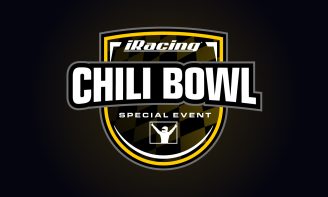
INSIGHT: Max Esterson on the Ray FF1600
March 14th, 2023 by Chris Leone

The Ray FF1600 is one of iRacing’s newest cars, and iRacing-sponsored Max Esterson—whose car was replicated in the sim—is one of the best FF1600 racers in the world. Max was kind enough to offer us not only his feedback throughout our development process, but also a primer on the kind of racing you’ll be getting into, and some expert tips:
With the Ray FF1600 coming to iRacing for Season 2, I thought that I should write a little about the history of Formula Ford racing, my experience in the Ray, as well as some tips to help get you up to speed once the car hits the virtual track.

Formula Ford as a category has been one of the best proving grounds for aspiring racing drivers since the 1960s. Despite undergoing a few different transformations, the class is still competitive, relatively affordable, and most importantly, pure. The racing in Formula Ford is second to none. Since the cars have no wings, turbulent air has almost no negative effect and drivers can follow each other very closely. The lack of downforce and treaded tires cause the cars to be constantly sliding, providing young drivers a great opportunity to learn about car control and mechanical grip.
Formula Ford really began to gain traction in the late 70s with the rise of the Formula Ford Festival, a year-end, non-championship event that at one point brought in around 200 entries. The first Festival was held at Snetterton in 1972, but the event has been at Brands Hatch since 1976. It is one of the most coveted junior formula races in the world. In the 70s, 80s, and even into the 90s, winning the Formula Ford Festival was a big step towards a Formula One seat, as evidenced by past winners: Johnny Herbert, Roland Ratzenberger, Eddie Irvine, Jan Magnussen, Mark Webber, and Jenson Button to name a few.

Today Formula Ford continues to run in several countries including the United States, Australia, New Zealand, Ireland, and most prominently still, England. In addition to the British National Championship series and several other smaller regional series, the Formula Ford Festival continues to be a fantastic race with approximately 100 entries each year, together with the other big year-end event at Silverstone called the Walter Hayes Trophy which has joined the calendar since 2001.
My first time driving a Ray was at the end of 2020. I had just completed most of the F1600 Championship Series in America and decided to go across the pond to explore my options for the 2021 season. My eyes were opened wide by the British-spec Formula Ford; it was just so much more fun to drive than the US version. What makes the British car so much better is the tire. The treaded Avon tire compared to the US’s full racing slick provides the perfect amount of grip for the ~110 horsepower produced by the original Ford Kent engine from the 60s and allows you to drive with quite a bit of slip angle. And for an entry-level series, it is a very economical tire as it’s used in wet and dry and has very little degradation.

The first race for me in the Ray was at the 2020 Formula Ford Festival with Low Dempsey Racing (now known as Ammonite Motorsport). It was a great experience, and I was able to learn so much as it was my first time racing in the rain. I ended up 6th in the Grand Final which I was quite happy with for my first try. The Walter Hayes Trophy the following weekend at Silverstone proved to be a bit more difficult as I could only manage a P14 finish. Regardless, the experience was enough to bring me back to the UK for the 2021 season where I managed to take 9 wins and 23 podiums in 34 races. I ended up a very close 3rd in the National Championship. At the Festival I finished 2nd after starting the Grand Final way back in 13th and at the Walter Hayes Trophy I swept the weekend. It was a great finish to the year and very special as I was racing as part of the Team USA Scholarship program which has sent American drivers to the Festival and Walter Hayes for over 30 years now.
While I moved up from Formula Ford in 2022 and into the GB3 Championship (formerly known as British F3), I still had the bug. I came back for the 2022 FF Festival with Ammonite Motorsport and dominated the event, becoming the first American to win it. I then did the Walter Hayes Trophy which I also dominated (despite being frivolously disqualified after winning the Final). Built by Gavin Ray (son of Ray Race Cars founder, Bert Ray) in a small South London workshop, the Ray has certainly proven to be the chassis to beat as of late. When I stepped back into the car, I realized how much I missed driving it. I drove many fast, high power, high downforce cars in 2022, yet I think I enjoyed driving the Ray the most.
It’s been a great experience working with iRacing on developing the Ray FF1600 in the sim. I think it’s a unique car and quite a tricky one to get right due to how much it slides. The final product is fantastic and really couldn’t be much closer to the real thing. Braking into the first corner at Brands Hatch on the sim for example feels so familiar to me (I’ve probably done 30+ days there in the Ray). It’s pretty amazing!

Now to the specifics of driving the car. A little bit of sliding is good, but don’t overdo it. The rear of the car should never be completely settled but it should be pretty forgiving in terms of catching slides. The car’s behavior on entry is quite dependent on how you brake. You’ll need to hold onto the brake for longer than you would in a downforce car to keep weight on the front tires. Once you drive it you’ll realize how much control you have over the car with the brake pedal… I like to say, “steer with the brakes.”
On throttle you will want to be aggressive. The car does not have much power and it has an open differential, so you will generally have some understeer on power. I find that getting to full throttle quickly rather than gradually helps combat some of the understeer. The car has a 4-speed H-pattern gearbox. That said you do not need to use the clutch on upshifts and you will just need a small lift. And on the downshifts you can use the clutch but I choose not to as I just left foot brake and blip the throttle. Without any blip, the rear can become quite unstable.
Also, do not be alarmed if the steering wheel effort seems very light! The car is like this in real life which allows you to catch slides easily, but if you like a bit more feeling through your wheel you can turn up the force feedback to your liking. Now go enjoy it!
You may also like...
About Chris Leone
Chris Leone is iRacing's Marketing and Communications Manager. He is the former media director of Red Bull Global Rallycross and has worked numerous stock car, open wheel, and off-road races as a writer and social media expert. Chris can be found on Twitter at @christopherlion.














































